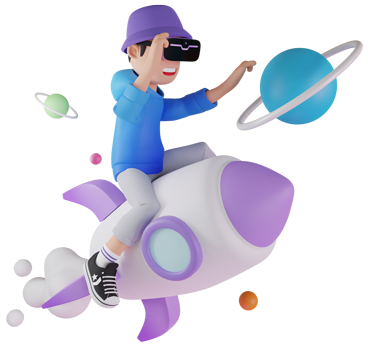3D modeling is a cornerstone of modern digital design and animation. Whether for movies, video games, architectural visualization, or industrial design, understanding the different types of 3D modeling is essential. This blog post will explore the various methods, their unique characteristics, and how they are used across industries.
What Is 3D Modeling?
Before diving into the types, it’s important to define what 3D modeling is.The resulting model can be rotated, animated, and viewed from different angles, making it a versatile tool for various applications.
What Are the Different Types of 3D Modeling?
When asking, “What are the different types of 3D modeling?” Below, we cover the primary types of 3D modeling, each with its unique process and application.
1. Polygonal Modeling
Polygonal modeling is one of the most popular and widely-used forms of 3D modeling. In this method, models are constructed using polygons, usually triangles and quadrilaterals, which are connected together to form a mesh.
- Applications: Used in video games, movies, and visual effects.
- Advantages: High flexibility and detail, perfect for creating characters and complex shapes.
- Software: Blender, Autodesk Maya, 3ds Max.
2. NURBS Modeling
NURBS stands for Non-Uniform Rational B-Splines. Unlike polygonal modeling, which uses flat surfaces, NURBS modeling employs curves to create smooth and organic shapes. This makes it ideal for applications requiring high precision and smooth surfaces.
- Applications: Automotive design, industrial design, and architectural visualization.
- Advantages: High precision and smooth, curved surfaces.
- Software: Rhino, Autodesk Alias.
3. Digital Sculpting
Digital sculpting mimics traditional sculpting by allowing the artist to manipulate a 3D model as if it were made of clay. This type of 3D modeling is ideal for creating highly detailed and organic shapes.
- Applications: Character design, creatures, and high-resolution models for movies and games.
- Advantages: Allows for highly detailed, organic shapes.
- Software: ZBrush, Mudbox.
4. CAD Modeling
CAD (Computer-Aided Design) modeling is essential for engineering and manufacturing applications. It focuses on creating precise models that can be used for prototyping, product design, and manufacturing.
- Applications: Engineering, product design, and manufacturing.
- Advantages: Precision and scalability, ideal for technical designs.
- Software: AutoCAD, SolidWorks, CATIA.
5. Procedural Modeling
Procedural modeling uses algorithms to automatically generate models based on specific parameters set by the artist. This can be particularly useful for creating landscapes, textures, and repetitive patterns.
- Applications: Game development, visual effects, and animation.
- Advantages: Efficiency in generating complex structures and textures.
- Software: Houdini, Blender (with procedural tools).
6. Volumetric Modeling
Volumetric modeling deals with the internal structure of an object, not just the surface. It’s often used in scientific and medical visualizations, where the internal parts of an object are as important as the external.
- Applications: Medical imaging, scientific visualization.
- Advantages: Can represent internal structures, useful for complex data.
- Software: Voxel-based programs, Blender (with add-ons).
If you’re curious about how 2D and 3D animation different, check out our detailed comparison to understand the unique aspects of each style and their applications in various industries
Choosing the Right 3D Modeling Technique
Understanding what are the different types of 3D modeling helps in choosing the right technique for your project. Each method has its strengths and is suited for specific tasks. For example, if you are developing a character for a game, polygonal or digital sculpting might be ideal. Meanwhile, CAD modeling would be more appropriate for creating a technical product design.
Consider the Following Factors When Choosing:
- Purpose of the Model: What will the model be used for? Animation, visualization, or production?
- Level of Detail Needed: Some techniques, like digital sculpting, can achieve incredibly high levels of detail.
- Software Compatibility: Not all software supports all types of 3D modeling. Make sure the tools you choose align with your preferred method.
Applications of Different Types of 3D Modeling
When exploring what are the different types of 3D modeling, it’s important to look at where these models are used. From entertainment to engineering, 3D models have a range of applications that drive various industries.
Entertainment Industry
The entertainment sector, particularly film and video games, relies heavily on 3D modeling. Whether it’s creating lifelike characters or building entire worlds, 3D modeling is crucial for storytelling and visual engagement.
Architecture and Interior Design
3D models allow architects and designers to create detailed visualizations of buildings and spaces before they are constructed. This makes it easier to make design adjustments, share ideas, and provide clients with a realistic preview.
Product Design and Manufacturing
3D models help product designers visualize and refine products before production begins. This not only saves time but also allows for detailed testing and prototyping.
Healthcare and Medical Visualizations
The healthcare industry uses 3D models for everything from prosthetics to complex medical visualizations. This technology can help in planning surgeries, training medical professionals, and developing medical devices.
Conclusion: Understanding What Are the Different Types of 3D Modeling
To sum up, knowing what are the different types of 3D modeling and their applications can help you choose the best approach for your project. Each method offers unique benefits, and selecting the right one can make a huge difference in the final outcome. Whether you are an aspiring artist, game developer, or engineer, understanding these techniques is key to your success.
By understanding and mastering these different types, you can bring your ideas to life with stunning realism and precision. Visit 3s Animation’s website to learn more about our services and how we can help you with all your 3D modeling needs.






